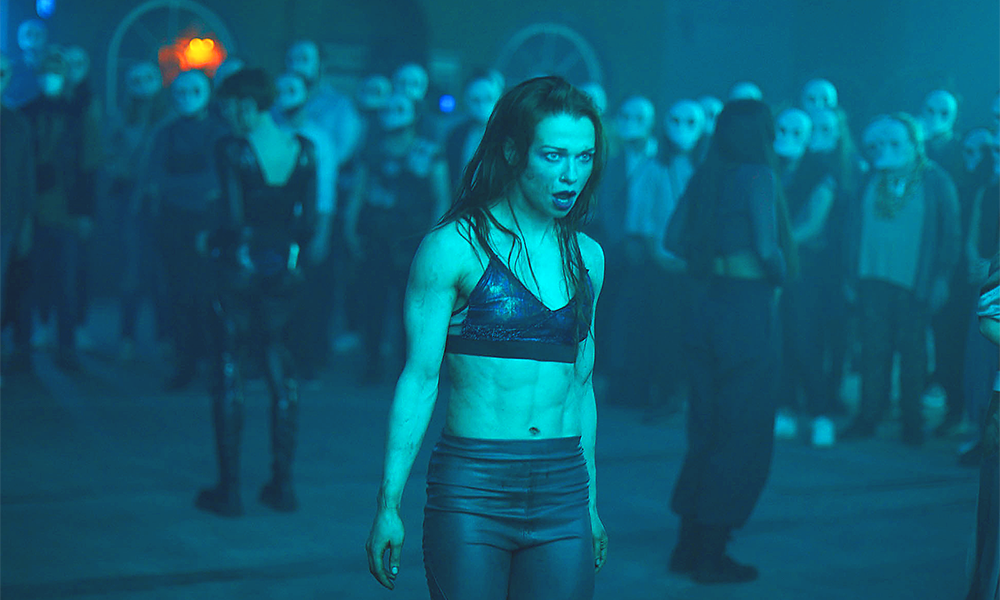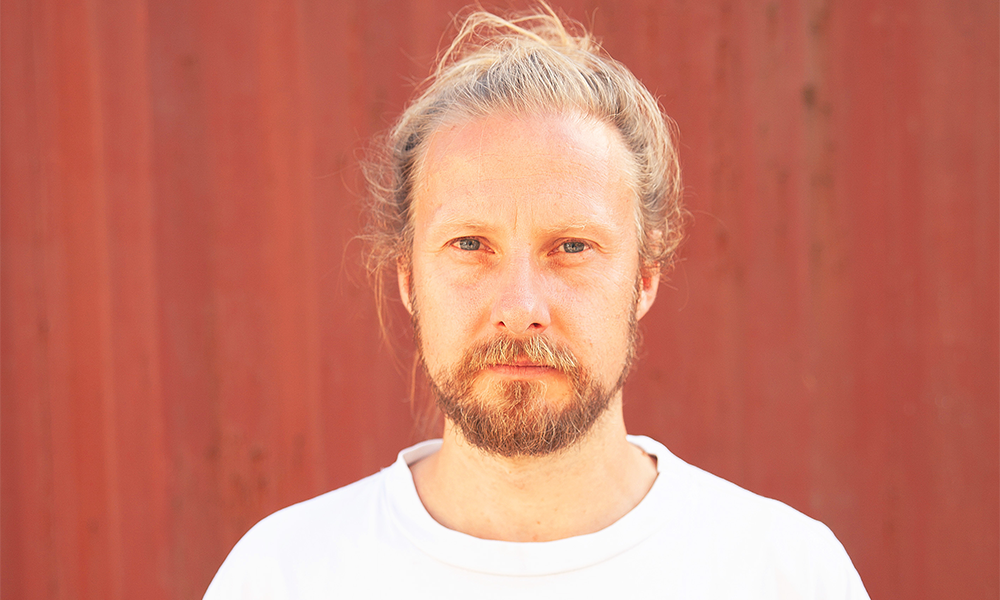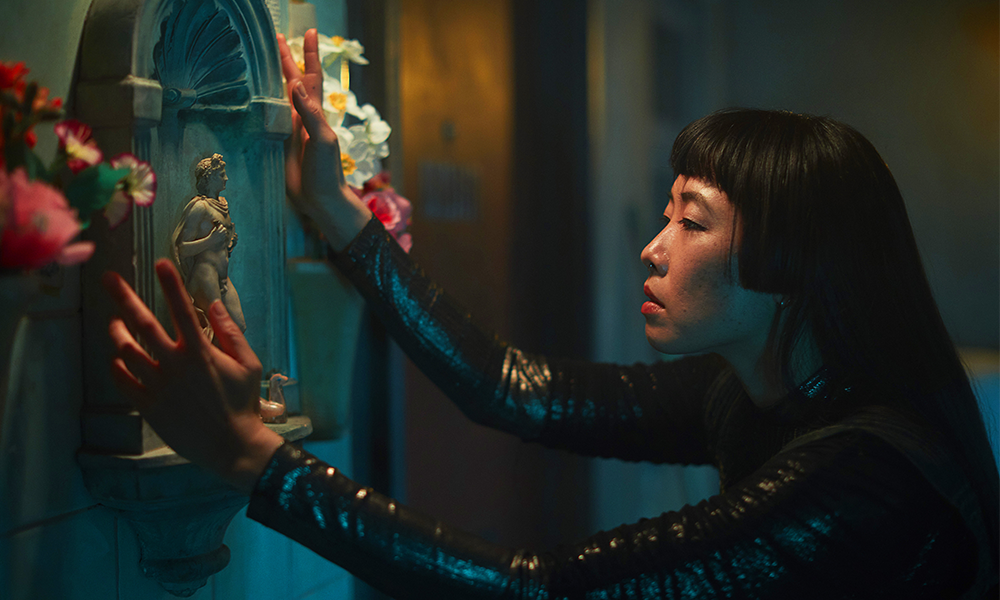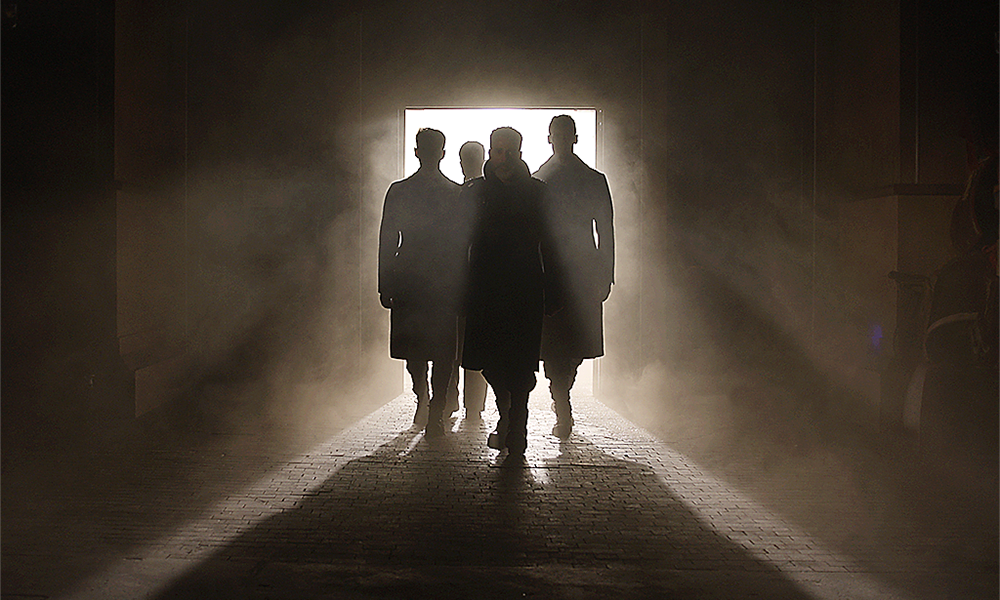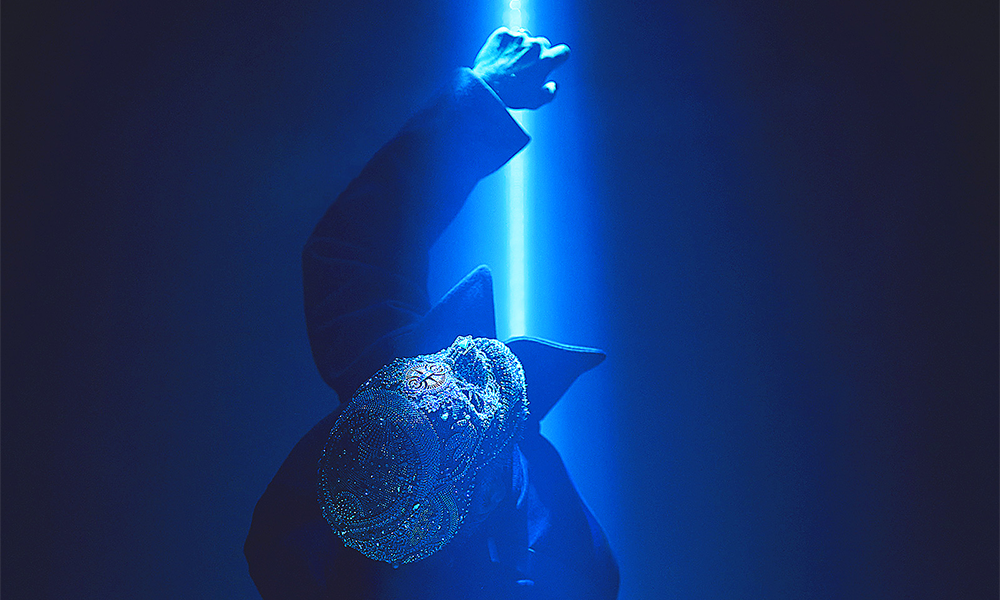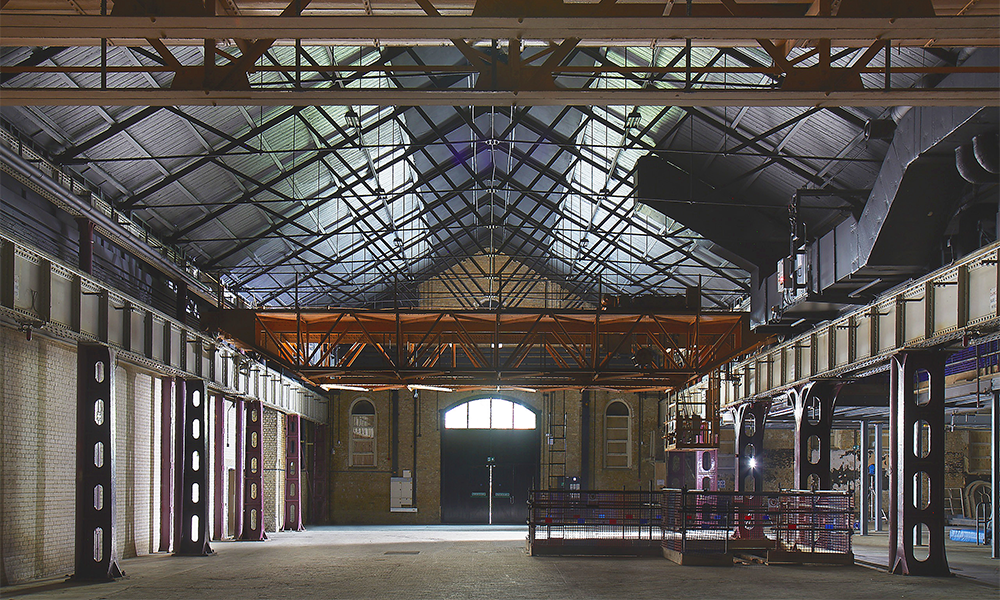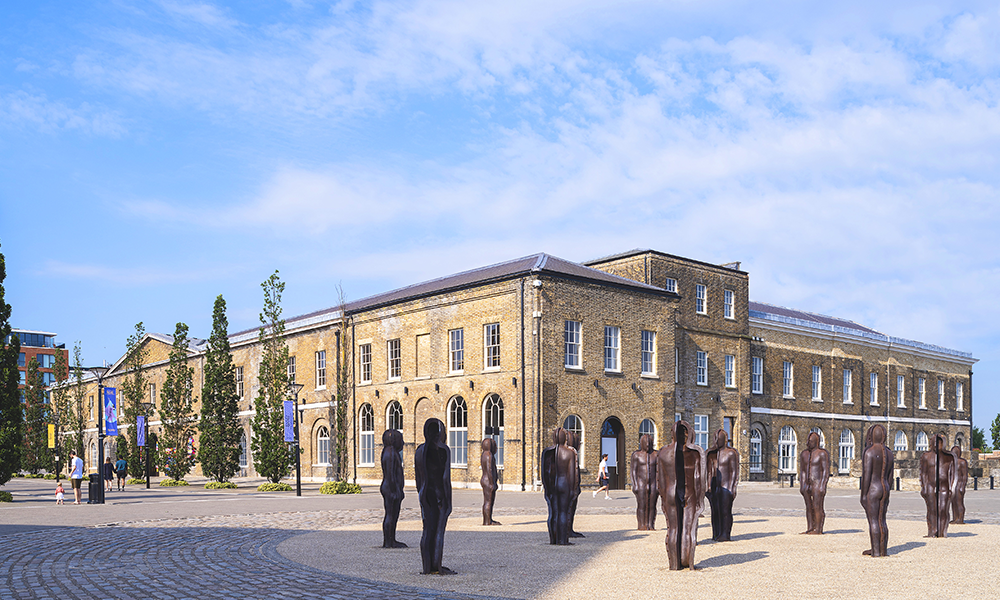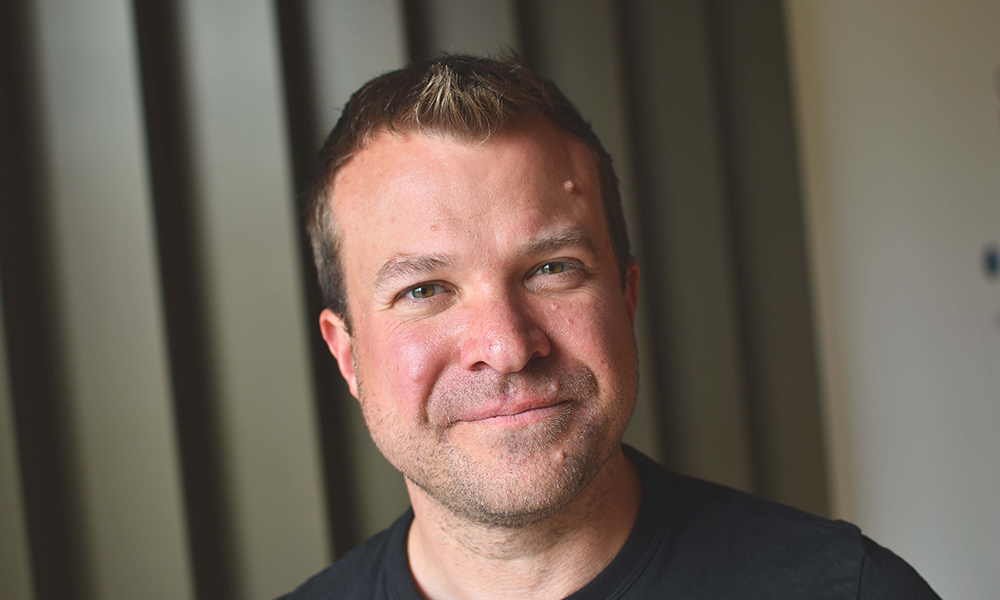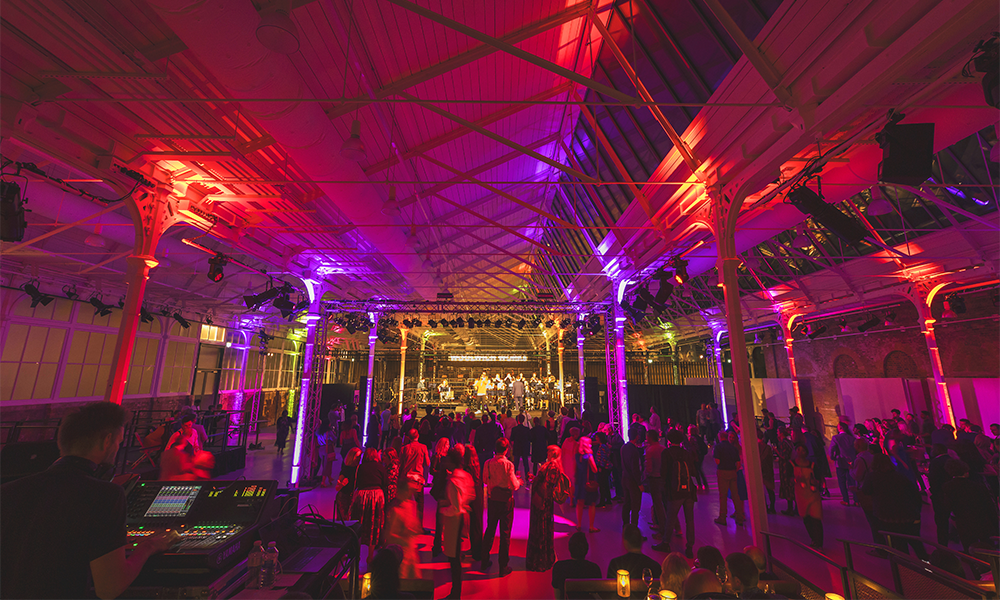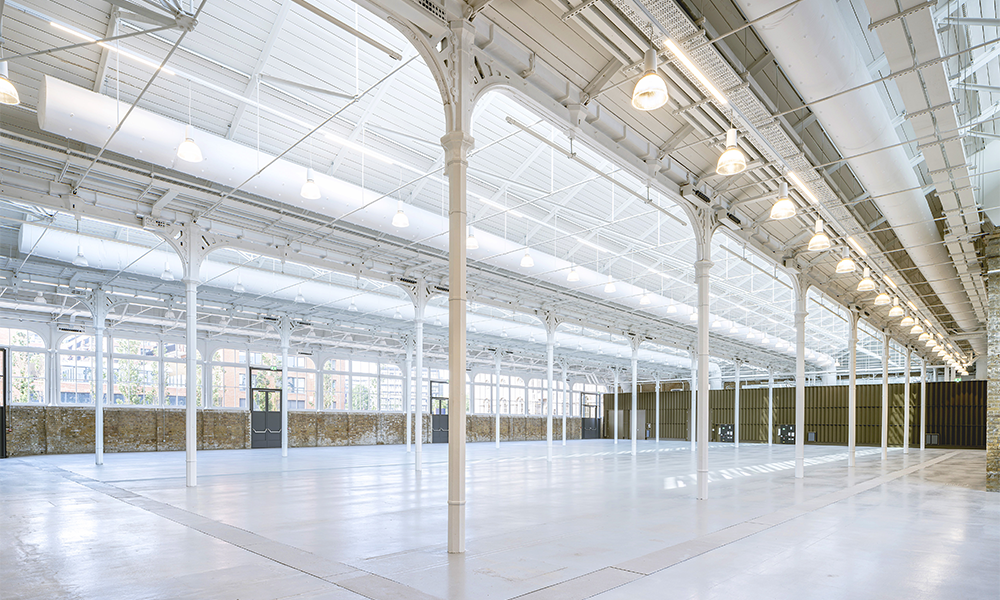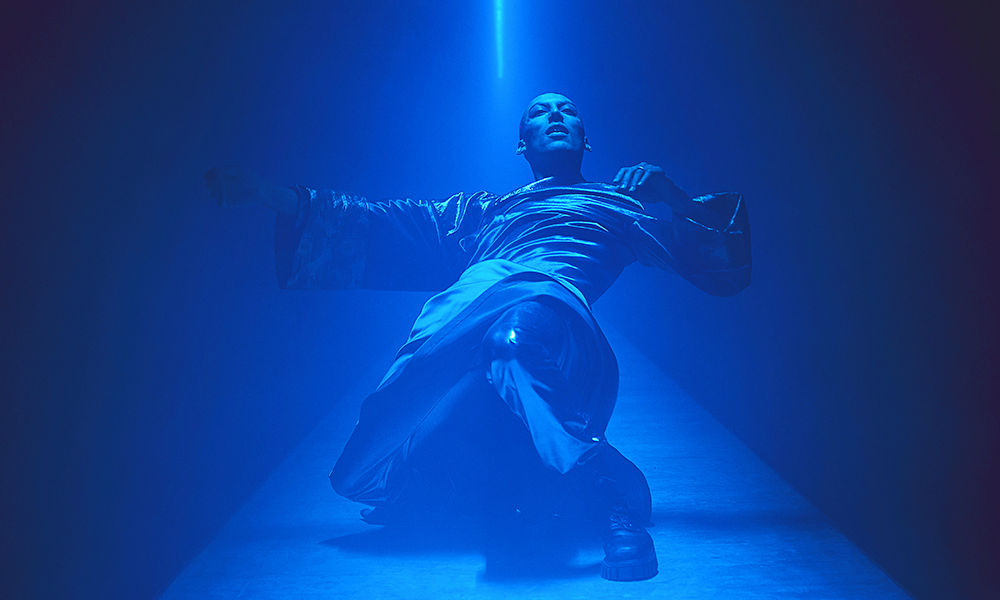How Punchdrunk’s latest show uses sound and sets to delight audiences at its Woolwich Works home
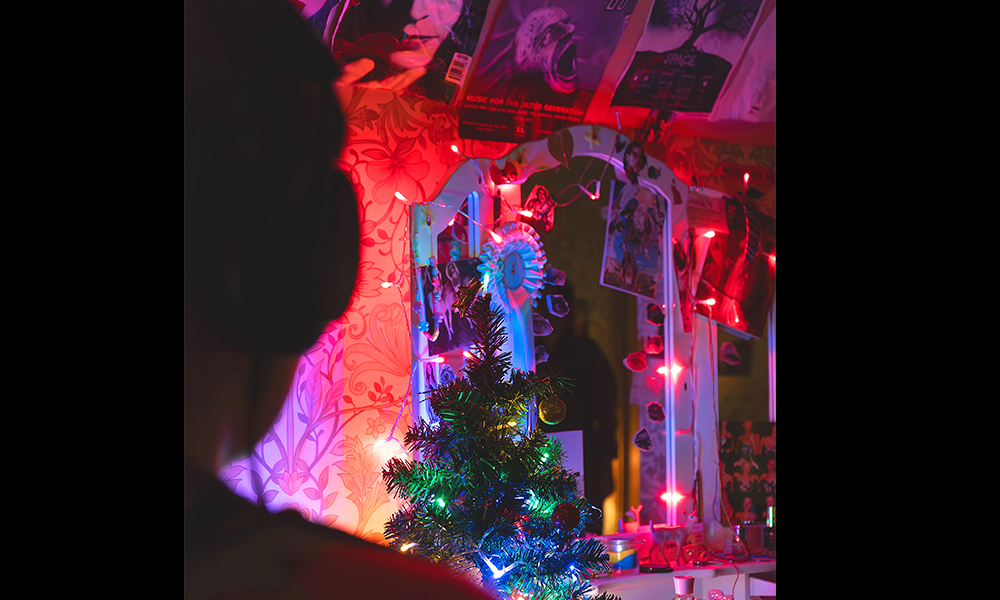
Subscribe to our free Wharf Whispers newsletter here
BY JESS MADDISON
Preparations to enter Punchdrunk’s newest immersive theatre show at Woolwich Works – Viola’s Room – are not without moments of apprehension.
First there’s a visit to the cloakroom where all coats and bags – yes, even the small ones – are surrendered.
Clutching my phone with the precious QR code ticket, I move on to the next stage where I am guided into a dimly-lit waiting area, with an array of tables, each with six chairs.
I sit down with my companion and the other chairs are slowly taken by strangers.
We exchange the odd nervous smile or titter while we are told a little about the experience.
Shoes and socks must be removed, there will be no speaking to each other but also no jump scares.
We then progress to the final stage where shoes are removed and headphones donned and our party waits nervously for the red light to turn on – an invitation to enter the experience.
Through the door we enter a small room with six chairs gathered around a pendant light.
We sit and a voice in my headphones tells me there will be periods of total darkness as we make our way through Viola’s Room.

To test our resilience, the light goes out. It’s pitch black and my body’s reaction is primal as my other senses and imagination attempt to fill the void.
The hairs on the back of the neck stand up, confirming the stereotype.
The bulb comes back on and we’re told to make our way into the experience, to follow the light.
What happens next is like stepping into a fairytale.
The story – narrated by Helena Bonham Carter – plays out in front me as I wander through a series of different scenes.
The world is surreal and wondrous and while the plot isn’t complicated, it’s interesting enough emotionally to engage me.
This lack of complexity is especially welcome on the occasions when I’m awed by what’s happening around me and miss a couple of sentences.
The set itself is huge. I find myself at the head of our group, wandering through the labyrinth of walls made of sheets, waiting for lights to appear and guide me to the next location.
Sometimes I am too quick and hover at a crossroads in darkness, waiting for illumination.
At one point, I imagine this is how Lucy must have felt, pushing her way through fur coats in a wardrobe, then fir trees beyond as she entered the land of Narnia.
The darkness provides both a slightly unnerving atmosphere and serves to exaggerate the tingling feelings and emotions created by the story and the startling sets.
The lack of shoes, similarly, creates a certain vulnerability while giving another dimension to the experience.
When, even in the context of immersive theatre, do you ever reach down and touch the floor?
What’s fun about Viola’s Room is that while I know, logically that I am in a warehouse in Woolwich, part of my brain thinks I really have stepped into another world. I know I’m basically enjoying theatre performance, but it feels like I’m in a ghost story.
The experience lasts about an hour but feels much shorter time. I emerge, blinking, back into normal life and grinning at my companions.
It’s been a bonding experience, though no-one has said a word. Conveniently, Punchdrunk’s bar – The Prop Room – is right there for debriefs and cocktails.
It’s a halfway point to linger just a little longer in the fantasy before rejoining the real world. Who wouldn’t want that?
5/5

key details: Viola’s Room
Viola’s Room: A Christmas Tale, which features an updated festive soundtrack alongside the original plot and narration, is set to run from until December 23, 2024.
Tickets for either show at Woolwich Works start at £28.50 per person.
Find out more about the show here
Read more: Will you take on the Santa Stair Climb in Canary Wharf?
Read Wharf Life’s e-edition here
Subscribe to our free Wharf Whispers newsletter here
- Jon Massey is co-founder and editorial director of Wharf Life and writes about a wide range of subjects in Canary Wharf, Docklands and east London - contact via jon.massey@wharf-life.com




